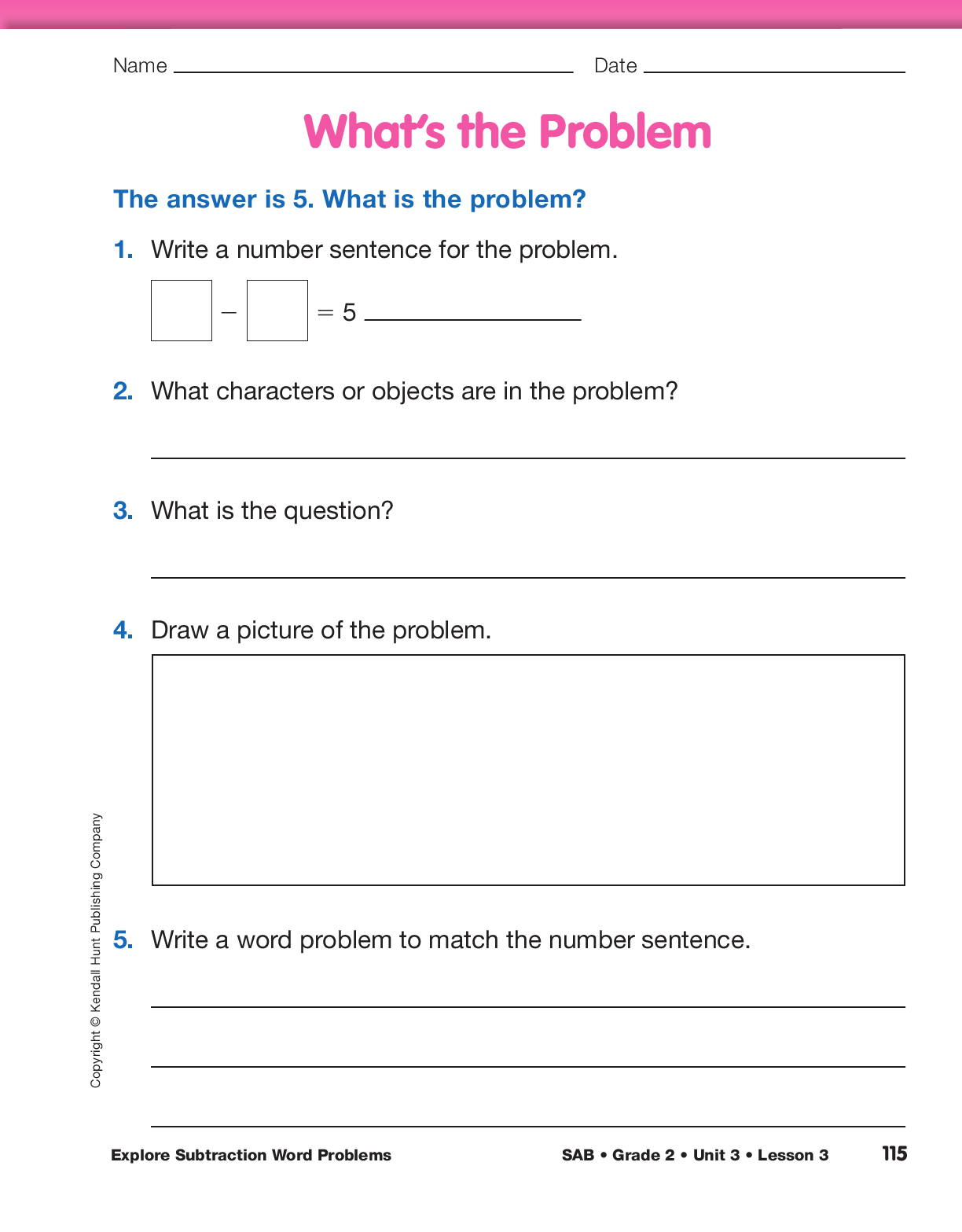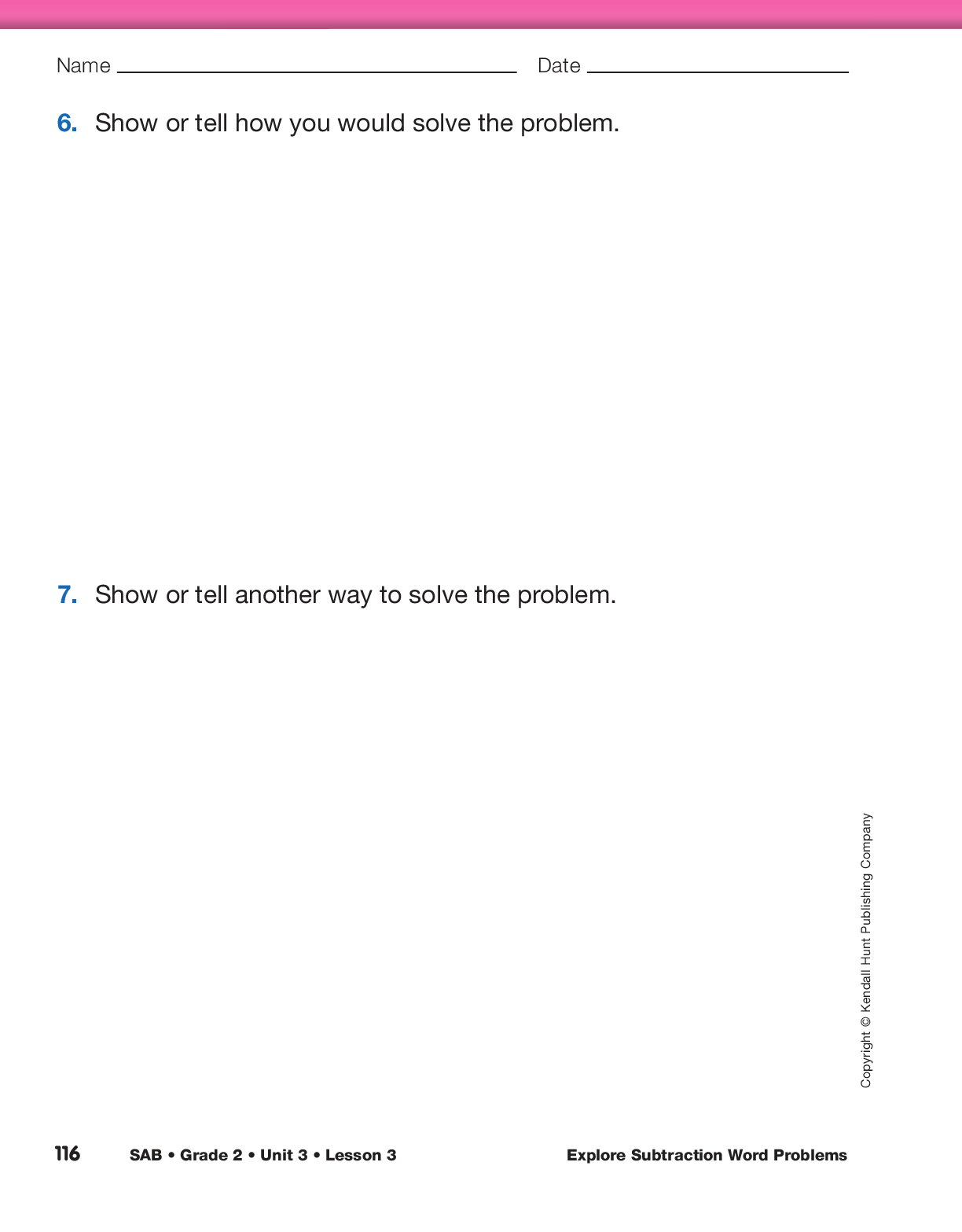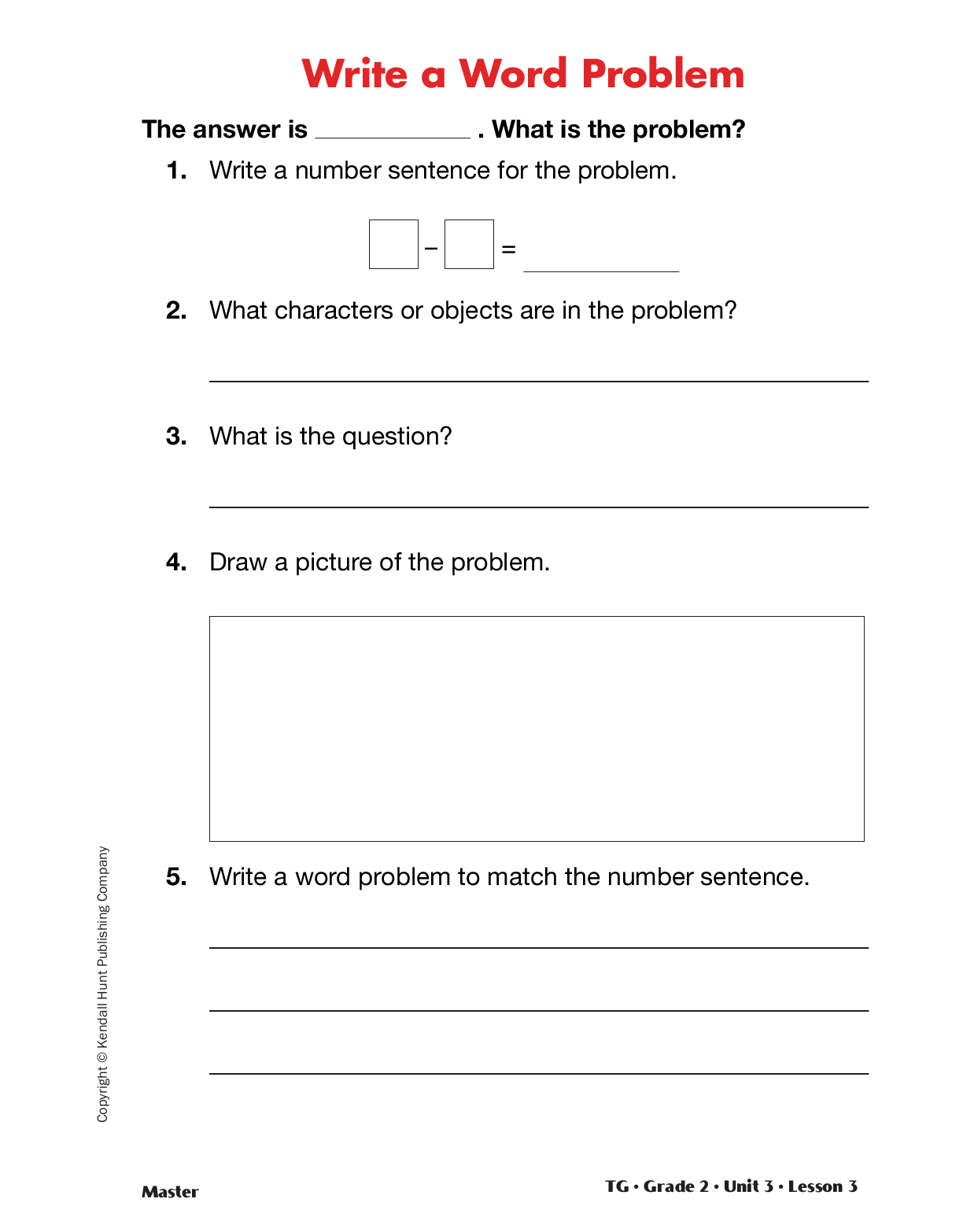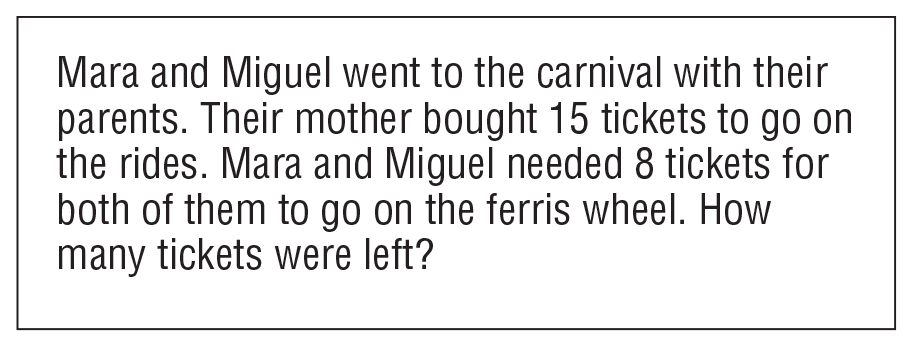Explore Subtraction Word Problems
Est. Class Sessions: 2Developing the Lesson
Part 2: Writing Word Problems
Write a Class Word Problem. Explain to students that you need help writing a subtraction word problem. Tell students the following story:
One afternoon, Mark started to work on his math
homework. He looked in his backpack but he found
that he had left the word problem at school. He
remembered that when he looked at the problem, he
thought the answer was 7 tickets. He also remembered
that the problem was about a carnival.
Unfortunately, he couldn’t remember the problem!
Mark decided that if he wrote his own word problem
to match the answer 7 tickets, it was better than not
doing his homework at all. Can you help him write a
subtraction word problem with an answer of
7 tickets?
Before students start developing a problem, generate a list of words related to the carnival theme. Record a list of carnival rides, games, and other activities on chart paper. See Figure 1 for a sample list of ideas. Students will use this list to help focus their ideas when writing word problems later in the lesson as well.
Use a display of the
Write a Word Problem Master to
demonstrate how to write a word problem, if the
answer is
7 tickets. Record 7 tickets on the blank at the
top of the page and in Question 1.
Ask:
Select one number sentence and write the numbers in the boxes.
Ask:
As a class, write a word problem with an answer of 7 tickets on the Write a Word Problem Master. See Figure 2 for a sample word problem.
Write a Subtraction Word Problem. Direct students to the What’s the Problem pages in the Student Activity Book.
Before they begin working, ask students to consider the following questions:
Have student pairs write their own problem on the What’s the Problem page in the Student Activity Book. Students draw a picture of their problem in the box and review the questions as they write the problem.
As students are working, provide a list of questions such as the following for students to refer to as they write their problems:
As students write, circulate around the room and ask them to read their problems aloud to you. Have number lines and connecting cubes readily available. Students will present their problems to others later in the lesson, and the problems can be used in a center for targeted practice.


















